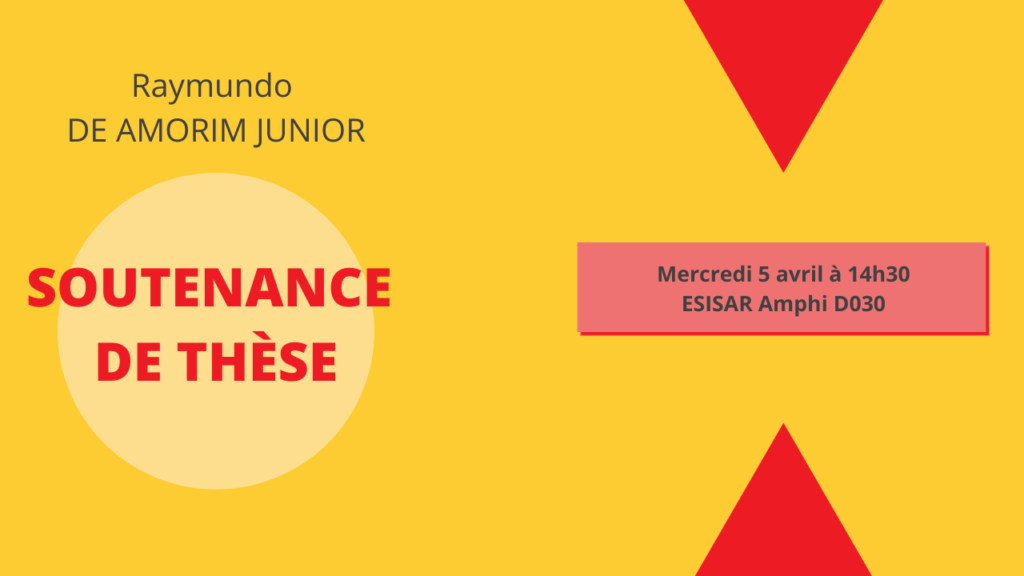
- Cet évènement est passé
Soutenance de thèse M. Raymundo DE AMORIM JUNIOR
5 avril, 2023 à 2:30 pm – 5:00 pm CEST

Etienne PERRET a le plaisir de vous convier à la soutenance de thèse de Raymundo De Amorim Junior
Tag RFID sans puce en bande millimétrique pour applications sécurisées
La soutenance au lieu :
Le mercredi 5 avril 2023 – 14h30
ESISAR Amphi D030
Abstract – Practical authentication systems attempt to optimize the trade-off between reliability and ease of implementation against the system’s complexity. In this context, new authentication propositions considering chipless Radio Frequency IDentification RFID solutions are proposed and implemented. Chipless RFID technology authentication provides a non-invasive method based on electromagnetic signature distinction, which does not need a line of sight and is fully printable in bio-sourced materials by low-cost methods. Furthermore, chipless RFID tags can provide a unique and unfalsifiable electromagnetic signature enhancing and assuring their identification. Therefore, the contrast between low-cost applications maintaining flexible and trustworthy solutions paves the way for new solutions based on machine learning, radar channel improvement, and imaging systems. Different authentication systems are proposed considering chipless tags, and the tag’s aspect-independent parameters are evaluated to highlight the electromagnetic signal uniqueness. This work will show that it is possible to authenticate items with chipless RFID tags, utilizing a non-intrusive method based on the exploitation of the electromagnetic signature at the millimeter-wave band (V-band). The goal is to get a distinctiveness signature containing information that will be used for authentication. A system based on the natural randomness inherent to manufacturing methods considering various applications and passive imaging techniques is being developed and applied to chipless RFID tags for authentication applications. Chipless tags based on canonical scatterers are evaluated, thus translated to V-band. First, the trade-offs that arise in V-band operation are analyzed. Then, the authentication level is assessed by the conventional maximum likelihood estimator. After, a new method considering the addition of different information of tag signal is proposed and, hence, evaluated by a machine learning classification. Despite the tag being fabricated in the same time-lapse, a significant enhancement is noted. High-order chipless tags aim to relax the fabrication constraints in V-band tag fabrication. An imaging-based system is proposed to locate the positions of the scatterers in the function of their frequency to increase the coding capacity that can improve the authentication level in the chipless system. That method can be combined with the previous methods. The comparative analysis concerning different applications will lead to the definition of each approach’s accuracy. Furthermore, determining the main characteristics in terms of signal variation will subsequently lead to the definition of a framework adapted to the measured data allowing to provide a high authentication level combining the advantages of each solution.
Keywords – Backscattered signal, millimeter-wave systems, chipless RFID tags, authentication, imaging.
etienne.perret@lcis.grenoble-inp.fr


